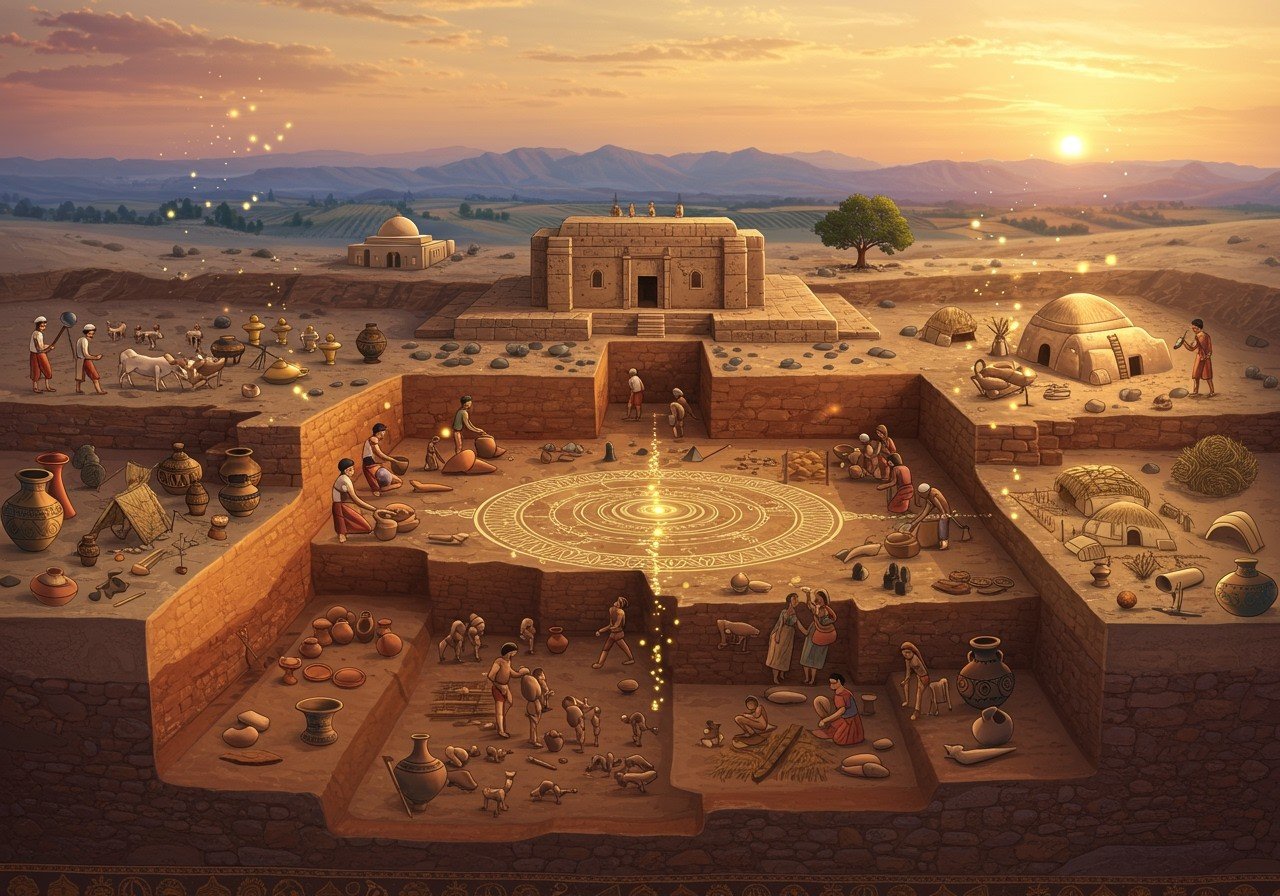
Mehrgarh, a significant Neolithic and Chalcolithic archaeological site located on the Kacchi Plain of Balochistan, near the Bolan Pass in modern-day Pakistan, offers a captivating glimpse into the dawn of agriculture and settled life in South Asia. Discovered in 1974 by a French archaeological mission led by Jean-François Jarrige, this ancient settlement, continuously occupied from approximately 7000 to 2600 BCE, unveils the ingenuity and resilience of our ancestors.
Mehrgarh’s Timeline: Understanding the Chronology
Mehrgarh’s story unfolds over millennia, beginning around 7000 BCE and thriving until 2500 BCE. The early phase, known as the aceramic Neolithic, is marked by the absence of pottery, showcasing a reliance on other materials. The subsequent ceramic Neolithic phase, starting around 5500 BCE, heralds a significant shift with the introduction of advanced pottery techniques, reflecting evolving cultural and technological advancements. This era also witnessed the domestication of plants and animals, marking a transition from hunting and gathering to farming and animal husbandry. Over time, settlement patterns, architecture, and subsistence strategies at Mehrgarh evolved, laying the groundwork for the later Indus Valley Civilization.
Milestones in Mehrgarh’s History
The initial settlement of Mehrgarh around 7000 BCE marks a pivotal moment in South Asian history. The archaeological discoveries of the 1970s unearthed the site’s immense historical value, providing crucial insights into early human life. Around 5500 BCE, significant cultural and technological transformations occurred, exemplified by advancements in pottery and other crafts. By 2500 BCE, Mehrgarh experienced a decline, with its population likely migrating towards the burgeoning Indus Valley Civilization.
Mehrgarh’s Cultural and Technological Contributions
Mehrgarh served as a cradle of agricultural innovation. The domestication of essential crops like wheat and barley within its fertile lands revolutionized food production. Evidence of early trade networks suggests interactions with neighboring regions, fostering cultural exchange and economic growth. Advancements in craft production, including pottery, bead-making, and metallurgy, demonstrate the community’s artistic and technological prowess. Burial practices reveal insights into social stratification and religious beliefs, while architectural innovations like mud-brick structures and granaries indicate a well-organized community life. Mehrgarh’s influence on subsequent civilizations, especially the Indus Valley Civilization, is undeniable.
Archaeological Discoveries: Unraveling Mehrgarh’s Past
The major findings at Mehrgarh have provided invaluable insights into its rich history. Early farming tools showcase the sophisticated agricultural practices of the Neolithic era. Pottery shards mark the transition to the ceramic phase, demonstrating technological progress. The presence of domesticated animals like cattle, sheep, and goats signifies advanced pastoral practices. Burial sites and grave goods offer glimpses into the social and cultural fabric of Mehrgarh society. Figurines and ornaments suggest early artistic expression and craft specialization, while dental remains provide crucial information on health and diet. The pioneering work of French archaeologist Jean-François Jarrige brought Mehrgarh’s fascinating story to light.
Mehrgarh’s Significance in Modern Pakistan
Mehrgarh holds a prominent place as a precursor to the Indus Valley Civilization. Its potential recognition as a UNESCO World Heritage site underscores its immense archaeological importance. Mehrgarh contributes significantly to Pakistan’s national pride and identity, reflecting its ancient roots. In educational curricula, Mehrgarh plays a vital role in teaching the history of South Asia. Ongoing efforts aim to preserve and promote Mehrgarh as a tourist destination, showcasing Pakistan’s rich cultural heritage to the world. Continuous research continues to uncover new facets of Mehrgarh’s captivating past.
Connecting with Ancient Traditions through Poojn.in
Inspired by the ancient practices of civilizations like Mehrgarh? Poojn.in offers a unique opportunity to connect with these timeless traditions through authentic ritual items:
- Pure Copper Items: Discover a wide selection of copper vessels and items, reminiscent of those used in ancient civilizations for their purifying properties. Experience the traditional significance of copper in your rituals and daily life. Copper is believed to enhance the taste and quality of food and water, adding a touch of ancient wisdom to your modern kitchen.
- Traditional Clay Products: Explore our diverse collection of clay items, echoing the earthenware traditions of early settlements like Mehrgarh. Connect with the essence of ancient craftsmanship and bring a touch of history to your home. Clay pots are ideal for slow cooking, preserving the natural flavors of your dishes and offering a healthy alternative to modern cookware.
- Sacred Ritual Kits: Find complete pooja sets and ritual materials that help preserve ancient worship methods, allowing you to experience the spiritual depth of traditional practices. Our kits provide all the necessary items for various ceremonies, ensuring a convenient and authentic experience.
Poojn.in ensures these items reach you with secure packaging and timely delivery across India. Each product comes with detailed usage instructions and information on its cultural significance.
Conclusion
Mehrgarh’s legacy endures as a testament to human ingenuity and the enduring power of our shared past. By exploring and understanding its history, we gain a deeper appreciation for the foundations of civilization. Poojn.in invites you to connect with this rich heritage through our curated collection of traditional items.
Explore more about ancient Indian architecture and spiritual expression: The Divine Feminine in Indian Architecture
Plan your pilgrimage to Aihole, another significant historical site: Aihole Pilgrimage Guide
Discover the cultural journey beyond the temples of Aihole: Aihole: A Cultural Journey


